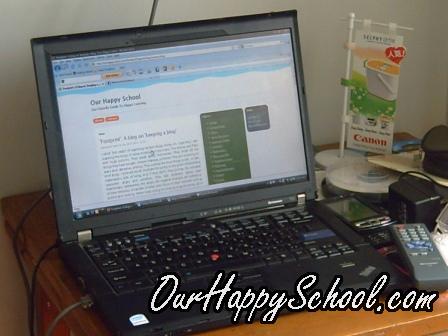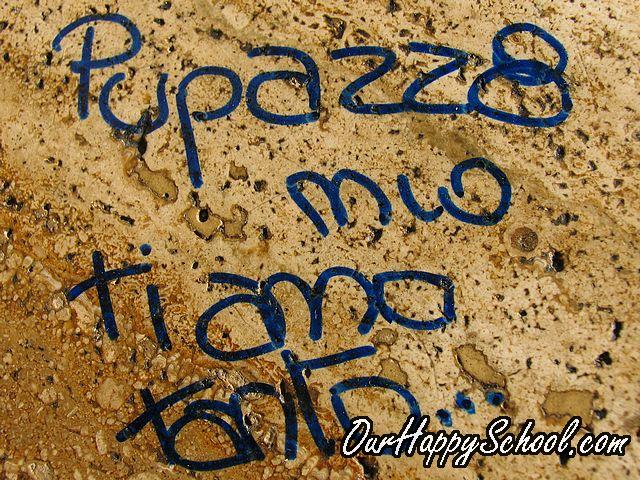Submitted by admin on Tue, 02/01/2011 - 13:33
 Case # 1: Belgian Linguistic Case
Case # 1: Belgian Linguistic Case
FRENCH-SPEAKING RESIDENTS of certain Flemish-speaking areas of Belgium, who wanted their children to be educated through French. While Dutch-speaking children in a particular French-speaking area were allowed to be educated in Dutch-speaking schools in a bilingual district outside the neighbourhood, French-speaking children in an equivalent Flemish area could not attend the French-speaking schools in the same bilingual district but were compelled to attend their local Dutch-language schools ...
The Applicants argued that Section 4 of the Belgian Act of 30th July 1963 "relating to the use of languages in education" breached Articles 8 (right to private and family life) and 14 (non-discrimination) of the European Convention of Human Rights and Article 2 of Additional Protocol 1 (right to education) to the Convention ...
Submitted by admin on Tue, 02/01/2011 - 13:20
1.Founded in 1425, the oldest Belgian university, the Catholic University of Leuven dates from the Middle Ages. Since 1970, it divided into independent French- and Dutch-speaking universities ...
2. Among OECD countries in 2002, Belgium had the third-highest proportion of 18–21 year-olds enrolled in postsecondary education, at 42%. (OECD is Organization for Economic Cooperation and Development which has 30 member nations, including the United States, Canada, Japan, Germany, France, the United Kingdom, and Australia.) An estimated 98% of the adult population is literate ...
3. Mirroring the dual structure of the 19th-century Belgian political landscape, characterized by the Liberal and the Catholic parties, the educational system is segregated within a secular and a religious segment. The secular branch of schooling is controlled by the communities, the provinces, or the municipalities, while religious, mainly Catholic branch education ...
Submitted by admin on Tue, 02/01/2011 - 13:15

... 2. Belgium is famous for seafood (such as mussels), chocolate, some 300 varieties of beer, waffles, and
frites (
fried potatoes)—which Belgians claim to have invented and which are sometimes served with mayonnaise.
3. The Belgian chemical industry leads the world in the production of cobalt and radium salts and also ranks high in the production of fertilizers and plastics.
4. Belgium is a founding member of the powerful North Atlantic Treaty Organization (NATO), a defense alliance created to enhance the stability, well-being, and freedom of its members (e.g. United Kingdom, United States, Canada, Germany, France, Italy, etc.). NATO’s headquarters are found in Brussels, Belgium ...
Submitted by admin on Mon, 01/24/2011 - 12:51
MARK JOSEPH TAJO SOLIS, the contributor, is from the KYUSHU UNIVERSITY in Japan. This essay he contributed was adjudged as one of the ten national winners of the Hands On Manila Volunteer Chronicles 2 National Essay Writing Contest organized by the Hands On Manila Foundation, Philippine Daily Inquirer, and Powerbooks. (You, too, can have your articles published here. )
...When I was a small kid, about six or seven years of age, I already knew that superheroes come in a variety of shapes and sizes. From Batman to Astroboy, from Ironman to Gundams, and the Justice League all the way to the X-Men, I knew that those beings are of extraordinary nature. They possess superpowers that can save the world within the snap of a finger and will always end up saving the day as well the entire humanity. They have awesome gadgets, well-crafted costumes, and exceptional instincts that render them immutable. And oftentimes, they are also of wealthy dispositions in life like Batman or prominent personalities of their age like Ironman. In other words, they are – no more, no less – the greatest of their own worlds ...
Submitted by admin on Wed, 01/12/2011 - 13:19
 “ …THE NEW e-LEARNING PLACES increased emphasis on social learning and use of social software such as blogs, wikis, podcasts and virtual worlds … This phenomenon has also been referred to as Long Tail Learning …” (Wikipedia)
“ …THE NEW e-LEARNING PLACES increased emphasis on social learning and use of social software such as blogs, wikis, podcasts and virtual worlds … This phenomenon has also been referred to as Long Tail Learning …” (Wikipedia)
Some definitions & descriptions:
Blogging(“Web logging”)
1. the frequent, chronological publication on the Web of personal thoughts and opinions for other Internet users to read. The product of blogging is known as a “blog.”
Submitted by admin on Wed, 01/12/2011 - 13:00
... 4. e-learning is naturally suited to distance learning and flexible learning, but can also be used in conjunction with face-to-face teaching, in which case the term blended learning is commonly used.
5. e-Learning pioneer Bernard Luskin argues that the "e" should be interpreted to mean exciting, energetic, enthusiastic, emotional, extended, excellent, and educational in addition to "electronic."
6. Some of the applications, processes, and media involved in e-learning are Computer-based learning, Web-based training, virtual classroom, Social networks, Blogs, and other digital collaboration ...
Submitted by admin on Wed, 01/12/2011 - 12:42

1.
e-learning enables people to learn anytime and anywhere. It allows learners to receive instruction despite geographic and time disparities.
2. It could cater to people with physical disabilities, women who were not allowed to enroll in educational institutions open only to men, people who had jobs during normal school hours, and those who lived in remote regions where schools did not exist.
3. It could provide educational opportunities to people in a country despite shortage of classrooms, qualified teachers, and instructional materials ...
Submitted by admin on Sun, 01/09/2011 - 12:04
This article on plagiarism contributed by MARY ROSEANN A. RAMIREZ was originally published in the December 2010 issue of SINAG-CSSP, the official publication of the College of Social Sciences and Philosophy (CSSP) UP Diliman. Its complete title is "'CAUSE I TOTALLY CHEATED ON THIS ARTICLE1: Or, How to Successfully Plagiarize in UP Diliman." (You, too, can have your articles published here. Send them through e-mail to OurHappySchool@yahoo.com.)

EVERYTHING can be plagiarized. Quotations, articles, blogs, photos, graphs, lesson plans, source codes, web sites, drawings, music, even ideas. With enough practice, you’ll never have to do any work at all ...
1. Alter words but imitate the structure of the sentence without citing the original. Yeah, exactly like that ...
2. Copy words or ideas from someone without giving credit, but make sure too misppell a few things on perpose! ...
Submitted by admin on Wed, 11/10/2010 - 08:59
 IT HAS BEEN OBSERVED that enrolment in many private schools has tremendously gone down due to increasing cost of private education. Many students have been transferring to public schools and this phenomenon has caused worries to school owners. How can private school stay afloat in this kind of environment without sacrificing quality?
IT HAS BEEN OBSERVED that enrolment in many private schools has tremendously gone down due to increasing cost of private education. Many students have been transferring to public schools and this phenomenon has caused worries to school owners. How can private school stay afloat in this kind of environment without sacrificing quality?
Submitted by admin on Wed, 11/10/2010 - 08:47
1. Clear School Mission
There is a clearly articulated school mission through which the staff shares an understanding of and commitment to instructional goals, priorities, assessment procedures and accountability. Staff accept responsibility for students' learning of the school's essential curricular goals.
Pages